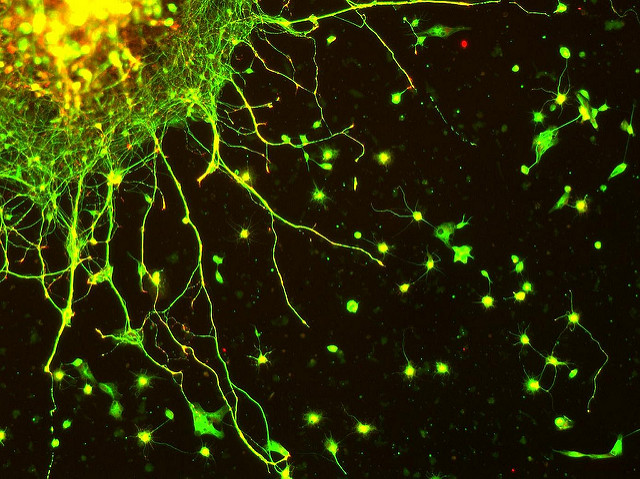Looking for Life: Connecting Neurons in the Brain with Consciousness

Neurons at 100x magnification. Image: MR McGill / Flickr
SAN FRANCISCO—Loving with all of your heart is overrated.
Because the brain is the organ of conscience, it’s the decision-maker when it comes to love, not the heart, said neuroscientist Christof Koch on 27 October at the World Conference of Science Journalists 2017.
“For Valentine’s Day, you give your girlfriend heart-shaped chocolate,” Koch said. “You should give her brain-shaped chocolate instead.”
Koch, chief scientist and president of the Allen Institute for Brain Science in Seattle, Washington, focuses on the role of neurons in consciousness. He addressed this topic in his talk “Neurons from the Human Brain.”
“If you want to understand consciousness, you need to understand neurons—what they are, how they connect,” he said.
Learning from dead brains
Physical actions like breathing and seeing can stimulate neuronal activity, but what leads to active consciousness because of those stimuli is the focus of Koch’s research.
The biggest hurdles to furthering his research are the obvious limitations to studying living brains, Koch said. “No one’s going to give me their living brain, and I’m not going to give up my living brain,” he said. “What we know is from dead brains.”
Koch looks at neurons in a piece of human brain that was excised as a tumor. He and his team can stimulate the neurons in the brain tissue and observe their activity on a computer. Because this is a dead piece of tissue, there are no ethical qualms.
Most of his other brain research is done on mouse brains, despite the obvious size and complexity difference between human brains. Koch likened the differences of the brains to the operating systems of an Atari and an iPhone.
The benefit of using Atari-like mouse brains is that they are living brains, and this allows the researchers to make recordings that allow them to hear neurons firing.
Are dolphins smarter than humans?
Audience member Kiki Sanford, a neuroscientist at the University of California, Davis, asked Koch about aspects of the neurons that could contribute to the differences in human and mouse consciousness.
Koch said it’s likely that there are differences, seeing as how we have much larger brains. But, he pointed out, humans don’t have the biggest brains on the planet.
"We don't even have the biggest cortex!"
“It’s embarrassing for us—we don’t even have the biggest cortex!” he said. “Are dolphins smarter, but, because they only have flippers, they can’t develop technology and mess up the world like we do?”
Scientists will need to study human brains more thoroughly because of the obvious size and chemistry differences in animal and human brains, Koch said.
For example, human-specific neurotransmitters need to be looked at when creating drugs for schizophrenic patients. Viewing mouse brains can help, but they’ll never function exactly the same way as a human’s.
—
Jillian Clemente studies journalism and wildlife and fisheries management at West Virginia University. She aims to explain science and its impact on everyday life through writing. Follow her adventures at jillianclemente.com, contact her at clemente.jillian@gmail.com or tweet to her at @West_VirJillian.
